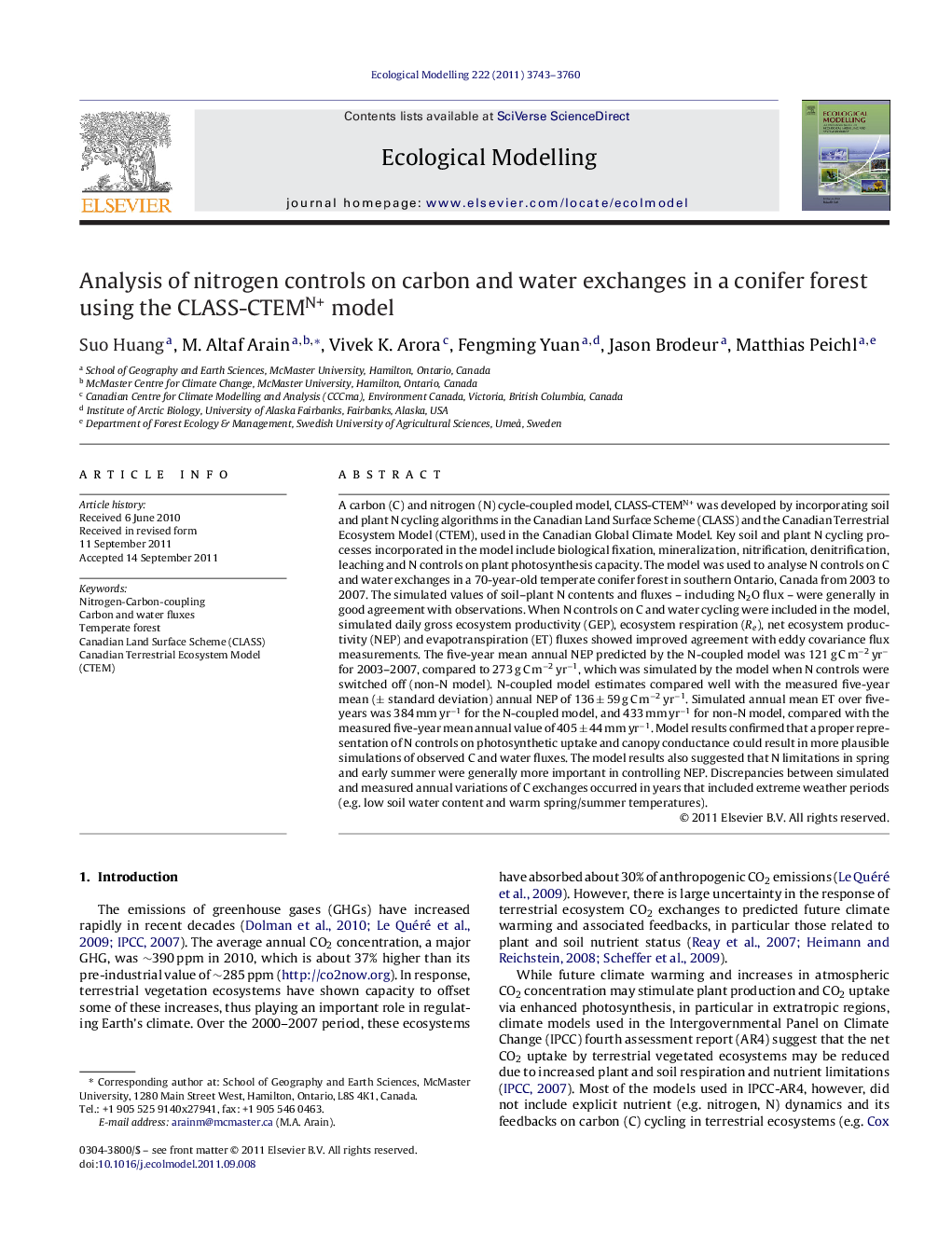| کد مقاله | کد نشریه | سال انتشار | مقاله انگلیسی | نسخه تمام متن |
|---|---|---|---|---|
| 4376622 | 1617520 | 2011 | 18 صفحه PDF | دانلود رایگان |

A carbon (C) and nitrogen (N) cycle-coupled model, CLASS-CTEMN+ was developed by incorporating soil and plant N cycling algorithms in the Canadian Land Surface Scheme (CLASS) and the Canadian Terrestrial Ecosystem Model (CTEM), used in the Canadian Global Climate Model. Key soil and plant N cycling processes incorporated in the model include biological fixation, mineralization, nitrification, denitrification, leaching and N controls on plant photosynthesis capacity. The model was used to analyse N controls on C and water exchanges in a 70-year-old temperate conifer forest in southern Ontario, Canada from 2003 to 2007. The simulated values of soil–plant N contents and fluxes – including N2O flux – were generally in good agreement with observations. When N controls on C and water cycling were included in the model, simulated daily gross ecosystem productivity (GEP), ecosystem respiration (Re), net ecosystem productivity (NEP) and evapotranspiration (ET) fluxes showed improved agreement with eddy covariance flux measurements. The five-year mean annual NEP predicted by the N-coupled model was 121 g C m−2 yr− for 2003–2007, compared to 273 g C m−2 yr−1, which was simulated by the model when N controls were switched off (non-N model). N-coupled model estimates compared well with the measured five-year mean (± standard deviation) annual NEP of 136 ± 59 g C m−2 yr−1. Simulated annual mean ET over five-years was 384 mm yr−1 for the N-coupled model, and 433 mm yr−1 for non-N model, compared with the measured five-year mean annual value of 405 ± 44 mm yr−1. Model results confirmed that a proper representation of N controls on photosynthetic uptake and canopy conductance could result in more plausible simulations of observed C and water fluxes. The model results also suggested that N limitations in spring and early summer were generally more important in controlling NEP. Discrepancies between simulated and measured annual variations of C exchanges occurred in years that included extreme weather periods (e.g. low soil water content and warm spring/summer temperatures).
► Including N algorithms in CLASS-CTEM model improved simulation of C and H2O fluxes.
► N limitations during early growing season were more important in controlling NEP.
► Simulated C exchanges during extreme weather years need improvements.
Journal: Ecological Modelling - Volume 222, Issues 20–22, October–November 2011, Pages 3743–3760